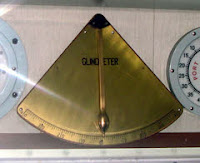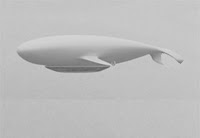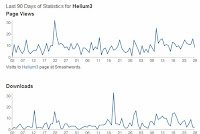new posts in all blogs
Viewing Blog: The Mervyn Bright Site, Most Recent at Top
Results 26 - 50 of 149
.jpg)
About the journey of writing and what I'm learning along the way.
Statistics for The Mervyn Bright Site
Number of Readers that added this blog to their MyJacketFlap: 1

Constructing a grid with many layers provides not only a framework in which to build your story and story world, but also provides the opportunity to test whether your story and characters work before committing a huge amount of time to writing. I’m sure we’ve all had the experience of getting three-quarters of the way through a story and realising it’s not working and we don’t know how it is going to end. However, this is a very process driven way to go about story writing and if you’re the sort who likes your characters to lead you all over the place, stop right here, because you will only feel frustrated.
To construct a multi-layered grid you start with the most basic elements of the story: The premise – often a ‘what if.....a boy were to meet a girl on a bus,’ etc.
Next you construct the characters, and the villain (arguably the most important character): who are they, what are they like, how do they relate to the villain of the piece, how do they relate to each other, what are they all after, how are they going to grow as individuals during the story?
Got your characters sorted? Now give each one a moral flaw and an immoral action in your story, this will make them much more interesting and give the other characters something to react against.
The thematic story line follows next: what is the story really about? What value are you trying to convey to your readers when they read this story. It could be a moral point, a political point or something quite ordinary like ‘true love never fails’ or ‘love needs more that true love,’ whatever takes your fancy. If your story has an underlying theme it will automatically have more depth.
Now you need to decide what everyone is after, this is the thing that drives all the characters to act and react against each other, it could be money, love, happiness, saving the world etc, though it doesn’t have to be what they eventually end up with.
Now map out your main scenes and briefly what happens in each, making sure each is a consequence of the actions taken by characters in the previous scenes.
At this point you should have a good idea if your story is going to work or lose its way.
You can carry on giving your framework more layers if you wish - it really depends on how much freedom or direction you want in your writing.

Constructing a grid with many layers provides not only a framework in which to build your story and story world, but also provides the opportunity to test whether your story and characters work before committing a huge amount of time to writing. I’m sure we’ve all had the experience of getting three-quarters of the way through a story and realising it’s not working and we don’t know how it is going to end. However, this is a very process driven way to go about story writing and if you’re the sort who likes your characters to lead you all over the place, stop right here, because you will only feel frustrated.
To construct a multi-layered grid you start with the most basic elements of the story: The premise – often a ‘what if.....a boy were to meet a girl on a bus,’ etc.
Next you construct the characters, and the villain (arguably the most important character): who are they, what are they like, how do they relate to the villain of the piece, how do they relate to each other, what are they all after, how are they going to grow as individuals during the story?
Got your characters sorted? Now give each one a moral flaw and an immoral action in your story, this will make them much more interesting and give the other characters something to react against.
The thematic story line follows next: what is the story really about? What value are you trying to convey to your readers when they read this story. It could be a moral point, a political point or something quite ordinary like ‘true love never fails’ or ‘love needs more that true love,’ whatever takes your fancy. If your story has an underlying theme it will automatically have more depth.
Now you need to decide what everyone is after, this is the thing that drives all the characters to act and react against each other, it could be money, love, happiness, saving the world etc, though it doesn’t have to be what they eventually end up with.
Now map out your main scenes and briefly what happens in each, making sure each is a consequence of the actions taken by characters in the previous scenes.
At this point you should have a good idea if your story is going to work or lose its way.
You can carry on giving your framework more layers if you wish - it really depends on how much freedom or direction you want in your writing.

In the year since I actively started marketing Helium3 as an e-book I’ve learned quite a lot about e-marketing. Here are the main things I think I’ve learned:
It’s difficult - it takes a good deal of time and effort.
The returns don’t justify the time investment, yet – but hopefully the hits will grow eventually until the time input does become justified.
No one will read anything from a self-published author unless it’s free. This means everyone need at least one book which is a loss-leader – if they like the free one they may return for another, and if they liked it enough they may pay for one.
Quantity is more important than quality, though, ideally you want both. A long backlist is important, because once a reader decides they like your work they will often return to purchase other books from you, especially if they feature the same characters.
Size does'nt matter – a lot of the best selling e-books are more novella than novel, often less than 20,000 words. In fact, brevity seems to be preferred when reading online. Whether this has to do with the nature of reading from a screen or the social settings in which the works are read, such as on a commute to work, is unclear. So it’s ok to write a trilogy of 25,000 words each rather than one saga of 80,000 words.
There appear to be three main approaches adopted when marketing e-books:
- The scatter-gun approach – getting the book listed on as many sites as possible.
- The funnel approach – channelling potential readers towards one sales website by contributing to as many blogs, chat rooms, and discussions as possible.
- The third party approach – paying someone else to undertake on or both of the above approaches.
I prefer the funnel approach, because I think I will get more return for my effort and I can keep a tight control over marketing efforts.
A lot of independent authors seem to spend a lot of time promoting their book to other independent authors – many of the site chosen to list work appear to only attract other authors.
There are plenty of people prepared to make money our of helping independent authors sell their works – typically these people promise lots, charge high, and deliver little. Do it yourself.
Everyone loves a special offer – discount codes really do work.
In future posts I will be working these ideas up into a marketing plan for the coming year.

In the year since I actively started marketing Helium3 as an e-book I’ve learned quite a lot about e-marketing. Here are the main things I think I’ve learned:
It’s difficult - it takes a good deal of time and effort.
The returns don’t justify the time investment, yet – but hopefully the hits will grow eventually until the time input does become justified.
No one will read anything from a self-published author unless it’s free. This means everyone need at least one book which is a loss-leader – if they like the free one they may return for another, and if they liked it enough they may pay for one.
Quantity is more important than quality, though, ideally you want both. A long backlist is important, because once a reader decides they like your work they will often return to purchase other books from you, especially if they feature the same characters.
Size does'nt matter – a lot of the best selling e-books are more novella than novel, often less than 20,000 words. In fact, brevity seems to be preferred when reading online. Whether this has to do with the nature of reading from a screen or the social settings in which the works are read, such as on a commute to work, is unclear. So it’s ok to write a trilogy of 25,000 words each rather than one saga of 80,000 words.
There appear to be three main approaches adopted when marketing e-books:
- The scatter-gun approach – getting the book listed on as many sites as possible.
- The funnel approach – channelling potential readers towards one sales website by contributing to as many blogs, chat rooms, and discussions as possible.
- The third party approach – paying someone else to undertake on or both of the above approaches.
I prefer the funnel approach, because I think I will get more return for my effort and I can keep a tight control over marketing efforts.
A lot of independent authors seem to spend a lot of time promoting their book to other independent authors – many of the site chosen to list work appear to only attract other authors.
There are plenty of people prepared to make money our of helping independent authors sell their works – typically these people promise lots, charge high, and deliver little. Do it yourself.
Everyone loves a special offer – discount codes really do work.
In future posts I will be working these ideas up into a marketing plan for the coming year.

With the new year I’ve decided to review where I am with my writing, so here goes:
Helium3 is never going to make it into print in it’s current form. It gets out of the slush pile, which puts it into the top 10% of manuscripts being submitted, but it never gets any further. Even got into the final thirty of the Chicken House/Times Children’s Writing competition. I know this because Barry Cunningham, from Chicken House, only read the last thirty runners up and he referred to the end story line of Helium3 in explaining why the runners up didn’t make it.
Helium3 has serious story flaws, not many, but enough to matter. The main characters are great, it’s fun to read, and at least 3000 people have liked it enough to download it, but ultimately the flaws can only be fixed by a complete rewrite – from the premise upwards. This would make it into a completely different story and I’ve already moved on to other things so it’ll just have to stay the way it is.
I can still make a bit of money from Helium3 as an ebook, because even with flaws it’s still better than the majority of ebooks out there. More importantly, I can use it to attract people to my website for the better stuff I am/will write now I know what I’m doing.
Smashwords.com is by far the best publishing/distribution platform on which to sell Helium3 as an ebook.
I’m not reaching my target audience. The teen audience I’m aiming at are not the ones downloading Helium3 from Smashwords. I need a marketing plan that drives/attracts my target audience to my website to download from Smashwords.com - more about this in later posts.
Nick

With the new year I’ve decided to review where I am with my writing, so here goes:
Helium3 is never going to make it into print in it’s current form. It gets out of the slush pile, which puts it into the top 10% of manuscripts being submitted, but it never gets any further. Even got into the final thirty of the Chicken House/Times Children’s Writing competition. I know this because Barry Cunningham, from Chicken House, only read the last thirty runners up and he referred to the end story line of Helium3 in explaining why the runners up didn’t make it.
Helium3 has serious story flaws, not many, but enough to matter. The main characters are great, it’s fun to read, and at least 3000 people have liked it enough to download it, but ultimately the flaws can only be fixed by a complete rewrite – from the premise upwards. This would make it into a completely different story and I’ve already moved on to other things so it’ll just have to stay the way it is.
I can still make a bit of money from Helium3 as an ebook, because even with flaws it’s still better than the majority of ebooks out there. More importantly, I can use it to attract people to my website for the better stuff I am/will write now I know what I’m doing.
Smashwords.com is by far the best publishing/distribution platform on which to sell Helium3 as an ebook.
I’m not reaching my target audience. The teen audience I’m aiming at are not the ones downloading Helium3 from Smashwords. I need a marketing plan that drives/attracts my target audience to my website to download from Smashwords.com - more about this in later posts.
Nick

Today, on WriterInTouch.com, I have posted two versions of the same first chapter from Nina Swift and the Sky God (working title). As I said in a previous blog, I am unsure whether to write the book in the first or third person. Both seem to have as many arguments for as against. Basically, I am too close to the work now to make a rational decision. So I thought I would take it to my readers and put it to the vote.
<?xml:namespace prefix = o ns = "urn:schemas-microsoft-com:office:office" />The first person version of chapter one can be viewed here.
The third person version can be viewed here.
Once you have made up your mind as to which you prefer, you can vote by answering the poll on the left of this page.
Please help a poor confused writer. Perhaps I should wish, ‘Good luck,’ to Nina.

Today, on WriterInTouch.com, I have posted two versions of the same first chapter from Nina Swift and the Sky God (working title). As I said in a previous blog, I am unsure whether to write the book in the first or third person. Both seem to have as many arguments for as against. Basically, I am too close to the work now to make a rational decision. So I thought I would take it to my readers and put it to the vote.
<?xml:namespace prefix = o ns = "urn:schemas-microsoft-com:office:office" />The first person version of chapter one can be viewed here.
The third person version can be viewed here.
Once you have made up your mind as to which you prefer, you can vote by answering the poll on the left of this page.
Please help a poor confused writer. Perhaps I should wish, ‘Good luck,’ to Nina.

I was originally going to write a second Mervyn Bright novel, a sequel to Helium3, but I have been persuaded by my three daughters to have a heroine instead. This fits nicely with a story idea which has been mulling around for a while, which, although still sci-fi/fantasy, is set in earth’s near future so there is a lot more familiarity for the reader.
I’ve also decided to follow the old maxim of writing about what I know, not in terms of subject matter or technical expertise, but in emotional and relational terms. So in many ways Nina’s story will have more of me in it.
Like Mervyn Bright, I have given Nina three companions, because with three you can push each character to the boundaries of friendship and end up with a community. This will not only give the story more opponents – friends being Nina’s first level opposition, but give the whole novel a strong ‘buddy story,’ feel, which I hope will result in lots of fun. There will also be three main opponents who, although linked together in a hierarchy, will also be in opposition to each other, so lots of drama. Now more BOS.

I was originally going to write a second Mervyn Bright novel, a sequel to Helium3, but I have been persuaded by my three daughters to have a heroine instead. This fits nicely with a story idea which has been mulling around for a while, which, although still sci-fi/fantasy, is set in earth’s near future so there is a lot more familiarity for the reader.
I’ve also decided to follow the old maxim of writing about what I know, not in terms of subject matter or technical expertise, but in emotional and relational terms. So in many ways Nina’s story will have more of me in it.
Like Mervyn Bright, I have given Nina three companions, because with three you can push each character to the boundaries of friendship and end up with a community. This will not only give the story more opponents – friends being Nina’s first level opposition, but give the whole novel a strong ‘buddy story,’ feel, which I hope will result in lots of fun. There will also be three main opponents who, although linked together in a hierarchy, will also be in opposition to each other, so lots of drama. Now more BOS.

5.00am on summer mornings is a good time to start writing. I can get a good few hours solid writing in before the children wake for breakfast.
The working brief for ‘Nina Swift and the SkyGod,’ is complete: that means I have the story, characters, plot, reveals, and key scenes all mapped out. It has taken several months to get to this point. The first draft is underway, though, I’m still undecided whether to tell the story in the first or third person. What I have decided to do is write the first couple of chapter one drafts in both the first and third person and put them both up on Writers In Touch to see what an audience thinks.
In the light of John Truby’s ideas (see previous posts) I have modified my writing process to be more prescriptive up front and less prescriptive for the first draft, now making the second draft into the expanded scene brief. So, in brief, the process goes something like this:
· Story ideas & characters
· Opponent’s and protagonist’s motivations, needs, and desires
· Character and opponents’ conflict patterns
· Major reveals and reversals
· Scene brief
· First draft
· Second draft as the expanded scene brief
· Third draft
My aim this time is to have no more than three drafts of the entire novel, rather than the six drafts that I had for Helium3, and to complete it all by the end of the year.
It has been a while since I embarked on the writing of a novel. Since then I have learned an incredible amount about the crafts of writing and story telling. I am really excited about this new novel. All that is required now to make it work is plenty of BOS (Bum On Seat) – in other words, hard graft.
I shall be making the most of the light mornings that remain to me to get well into the early drafts.

5.00am on summer mornings is a good time to start writing. I can get a good few hours solid writing in before the children wake for breakfast.
The working brief for ‘Nina Swift and the SkyGod,’ is complete: that means I have the story, characters, plot, reveals, and key scenes all mapped out. It has taken several months to get to this point. The first draft is underway, though, I’m still undecided whether to tell the story in the first or third person. What I have decided to do is write the first couple of chapter one drafts in both the first and third person and put them both up on Writers In Touch to see what an audience thinks.
In the light of John Truby’s ideas (see previous posts) I have modified my writing process to be more prescriptive up front and less prescriptive for the first draft, now making the second draft into the expanded scene brief. So, in brief, the process goes something like this:
· Story ideas & characters
· Opponent’s and protagonist’s motivations, needs, and desires
· Character and opponents’ conflict patterns
· Major reveals and reversals
· Scene brief
· First draft
· Second draft as the expanded scene brief
· Third draft
My aim this time is to have no more than three drafts of the entire novel, rather than the six drafts that I had for Helium3, and to complete it all by the end of the year.
It has been a while since I embarked on the writing of a novel. Since then I have learned an incredible amount about the crafts of writing and story telling. I am really excited about this new novel. All that is required now to make it work is plenty of BOS (Bum On Seat) – in other words, hard graft.
I shall be making the most of the light mornings that remain to me to get well into the early drafts.
 The Anatomy of Story, by John Truby
The Anatomy of Story, by John Truby
This is the book I have been searching for – after only a week, I have read it cover to cover twice and it is already well thumbed.
Every page is jam packed with technical information on story construction that is robustly evidenced - there is no flannel here - John Truby is truly a master of his art.
I realised a while ago, that good writing is less that half the battle, being able to craft a great story with great characters is what really counts. I have never been comfortable with the three act structure and in the Anatomy of Story, John Truby shows how these limitations can be overcome to create original, organic stories that play to the writers strengths.
It is always said that a writer should write what they know – here Truby shows how this can be achieved in terms of the characters, and how the characters’ personalities’ drive the story and story conflicts.
I cannot endorse or recommend this book highly enough. If you only have three books on writing on your shelf (I have six), make sure the Anatomy of Story, by John Truby, is one of them.
The question is, what should the other two books be? Any Suggestions?
 The Anatomy of Story, by John Truby
The Anatomy of Story, by John Truby
This is the book I have been searching for – after only a week, I have read it cover to cover twice and it is already well thumbed.
Every page is jam packed with technical information on story construction that is robustly evidenced - there is no flannel here - John Truby is truly a master of his art.
I realised a while ago, that good writing is less that half the battle, being able to craft a great story with great characters is what really counts. I have never been comfortable with the three act structure and in the Anatomy of Story, John Truby shows how these limitations can be overcome to create original, organic stories that play to the writers strengths.
It is always said that a writer should write what they know – here Truby shows how this can be achieved in terms of the characters, and how the characters’ personalities’ drive the story and story conflicts.
I cannot endorse or recommend this book highly enough. If you only have three books on writing on your shelf (I have six), make sure the Anatomy of Story, by John Truby, is one of them.
The question is, what should the other two books be? Any Suggestions?

Helium3 is now available for download via the Sony e-Reader shop and the Apple iPad shop.

Helium3 is today available for download via Apple iTunes for the Apple iPad.

Inspiration has hit for a new fiction project.
I had a vague idea and while conducting research on the story structure and fantasy world I came across a u-tube clip of the most amazing transport design being tested in model form. This design turns all previous designs on their head.
Suddenly, my mind latched onto this innovation, expanded it to extremes and the whole fantasy world just fell into place giving me a unique world setting for my story.
All I need now is a transendant story line and my children's fantasy thriller is on its way.
That's the hard work done - all I need to do now is write it.
 Inspiration has hit for a new fiction project.
Inspiration has hit for a new fiction project.
I had a vague idea and while conducting research on the story structure and fantasy world I came across a u-tube clip of the most amazing transport design being tested in model form. This design turns all previous designs on their head. If I can find the video again I will post it later.
Suddenly, my mind latched onto this innovation, expanded it to extremes and the whole fantasy world just fell into place giving me a unique world setting for my story.
All I need now is a transendant story line and my children's fantasy thriller is on its way.
That's the hard work done - all I need to do now is write it.
Fifth, actually, in the SmashWords Best Seller list – the third best selling novel. The current Smashwords promotional campaign has catapulted Helium3 into the top five most downloaded e-books.
 At the time of writing, Helium3 is the most downloaded Children's Book on Smashwords, the third most downloaded Young Adults Book and overall, is Fifth in the SmashWords Top 100 – the third most downloaded novel.
At the time of writing, Helium3 is the most downloaded Children's Book on Smashwords, the third most downloaded Young Adults Book and overall, is Fifth in the SmashWords Top 100 – the third most downloaded novel.
The current ebook promotional campaign has catapulted Helium3 to the most wanted list - it's a good feeling.

And is doesn't stop there, the graphs on the left show a slow, but increasing download rate - success is breeding success.
 Smashwords aren't yet able to provide analysis data, but an analysis of hits to this page, via Google Analytics, shows that the areas of most activity are, not surprisingly, North America and Europe in equal measure.
Smashwords aren't yet able to provide analysis data, but an analysis of hits to this page, via Google Analytics, shows that the areas of most activity are, not surprisingly, North America and Europe in equal measure.
A new review from a South African reader says, "This book is impossible to put down, very entertaining. I would recommend this book to anyone."
 Do you ever read your characters’ dialogue and think, ‘why do they all sound the same?’
Do you ever read your characters’ dialogue and think, ‘why do they all sound the same?’
The ideal is to read a piece of dialogue involving multiple characters, with no identifiers, and still be able to tell who is saying what.
<?xml:namespace prefix = o ns = "urn:schemas-microsoft-com:office:office" />
Your characters all need to speak with different voices. This is something you should include in your sketch of each character: what do they sound like, how do they speak, when/why do they speak, what phrases are unique to them, how do they construct their sentences?
One easy trick, is to use different grammar for different characters. Even something as simple as using long sentences for one character and snappy sentences for another can work well is used consistently.
Deliberately misusing grammar can carry a big impact, particularly in defining character, but only if the rest of your grammar is religiously consistent. A difficult trick to pull off, but something which can really grab your reader’s attention, without them even knowing why, if used sparingly – use the trick to often and it just looks like bad grammar.
 Do you ever read your characters’ dialogue and think, ‘why do they all sound the same?’
Do you ever read your characters’ dialogue and think, ‘why do they all sound the same?’
The ideal is to read a piece of dialogue involving multiple characters, with no identifiers, and still be able to tell who is saying what.
<?xml:namespace prefix = o ns = "urn:schemas-microsoft-com:office:office" />
Your characters all need to speak with different voices. This is something you should include in your sketch of each character: what do they sound like, how do they speak, when/why do they speak, what phrases are unique to them, how do they construct their sentences?
One easy trick, is to use different grammar for different characters. Even something as simple as using long sentences for one character and snappy sentences for another can work well is used consistently.
Deliberately misusing grammar can carry a big impact, particularly in defining character, but only if the rest of your grammar is religiously consistent. A difficult trick to pull off, but something which can really grab your reader’s attention, without them even knowing why, if used sparingly – use the trick to often and it just looks like bad grammar.
To some people, where we write is very important. Others can write anywhere anytime. I have different writing spaces depending on the weather, time of day, and family activity. When I worked in London I used to mainly write on the train during the daily commute. Of course, for tax purposes, I use the whole house, but most of the time I tend to keep to certain locations.
During the day, in late spring, summer, and early autumn, I take the laptop down to the summer house in the garden – more of a cramped shed really. I find moving to a different place, away from the housework and other distractions, frees up my mind.
I used to write late at nigh after the children had gone to bed, but I now find it more productive to retire early and rise early, before the children are up. During this time I sit at the desk, on the laptop, in the quiet of dawn, in the study/music/office/spare/junk room. With lots of hot coffees. Once the children are up, especially at the weekends, they take over the computer.
During the day, if everyone is out and the weather is too cold/wet for the summer house, I may write in the conservatory where there is most light.
The rest of the time, if a thought occurs to me, I grab one of my many notebooks and scribble so I can get the idea out of my brain and type it up later. Early morning – here come the children – time to hand over the laptop.
To some people, where we write is very important. Others can write anywhere anytime. I have different writing spaces depending on the weather, time of day, and family activity. When I worked in London I used to mainly write on the train during the daily commute. Of course, for tax purposes, I use the whole house, but most of the time I tend to keep to certain locations.
 During the day, in late spring, summer, and early autumn, I take the laptop down to the summer house in the garden – more of a cramped shed really. I find moving to a different place, away from the housework and other distractions, frees up my mind.
During the day, in late spring, summer, and early autumn, I take the laptop down to the summer house in the garden – more of a cramped shed really. I find moving to a different place, away from the housework and other distractions, frees up my mind.
 I used to write late at nigh after the children had gone to bed, but I now find it more productive to retire early and rise early, before the children are up. During this time I sit at the desk, on the laptop, in the quiet of dawn, in the study/music/office/spare/junk room. With lots of hot coffees. Once the children are up, especially at the weekends, they take over the computer.
I used to write late at nigh after the children had gone to bed, but I now find it more productive to retire early and rise early, before the children are up. During this time I sit at the desk, on the laptop, in the quiet of dawn, in the study/music/office/spare/junk room. With lots of hot coffees. Once the children are up, especially at the weekends, they take over the computer.
 During the day, if everyone is out and the weather is too cold/wet for the summer house, I may write in the conservatory where there is most light.
During the day, if everyone is out and the weather is too cold/wet for the summer house, I may write in the conservatory where there is most light.
The rest of the time, if a thought occurs to me, I grab one of my many notebooks and scribble so I can get the idea out of my brain and type it up later. Early morning – here come the children – time to hand over the laptop.
Where do you write?

What can you do if your protagonists turn out a bit too two-dimensional. The problem, usually, is that they lack character. When I first started posting on WIT my protagonists were a bit like that.
The art of story telling is to reveal character. Remember, description is not character: how people react to events and what they do, is character so give them something to react to. Read your story again - what happens in your story to reveal the character of your protagonists and antagonists? Probably not enough if they seem a bit wooden.
The best way to reveal character is to introduce more conflict. A lot can be revealed about the character of our protagonists if we just place a few stumbling blocks in their way. Or, instead of two characters instantly liking each other, how about making them dislike each other or doubt each other’s motives. Think of your story as an assault course for your protagonists, and give them a good workout
Sometimes, when we have grown fond of our protagonists, we make life too easy for them. You’re a writer, so act like a Greek god and make life difficult for your protagonists (and antagonists); see how they react – they might surprise you, I hope they do.
View Next 25 Posts


.jpg)
















